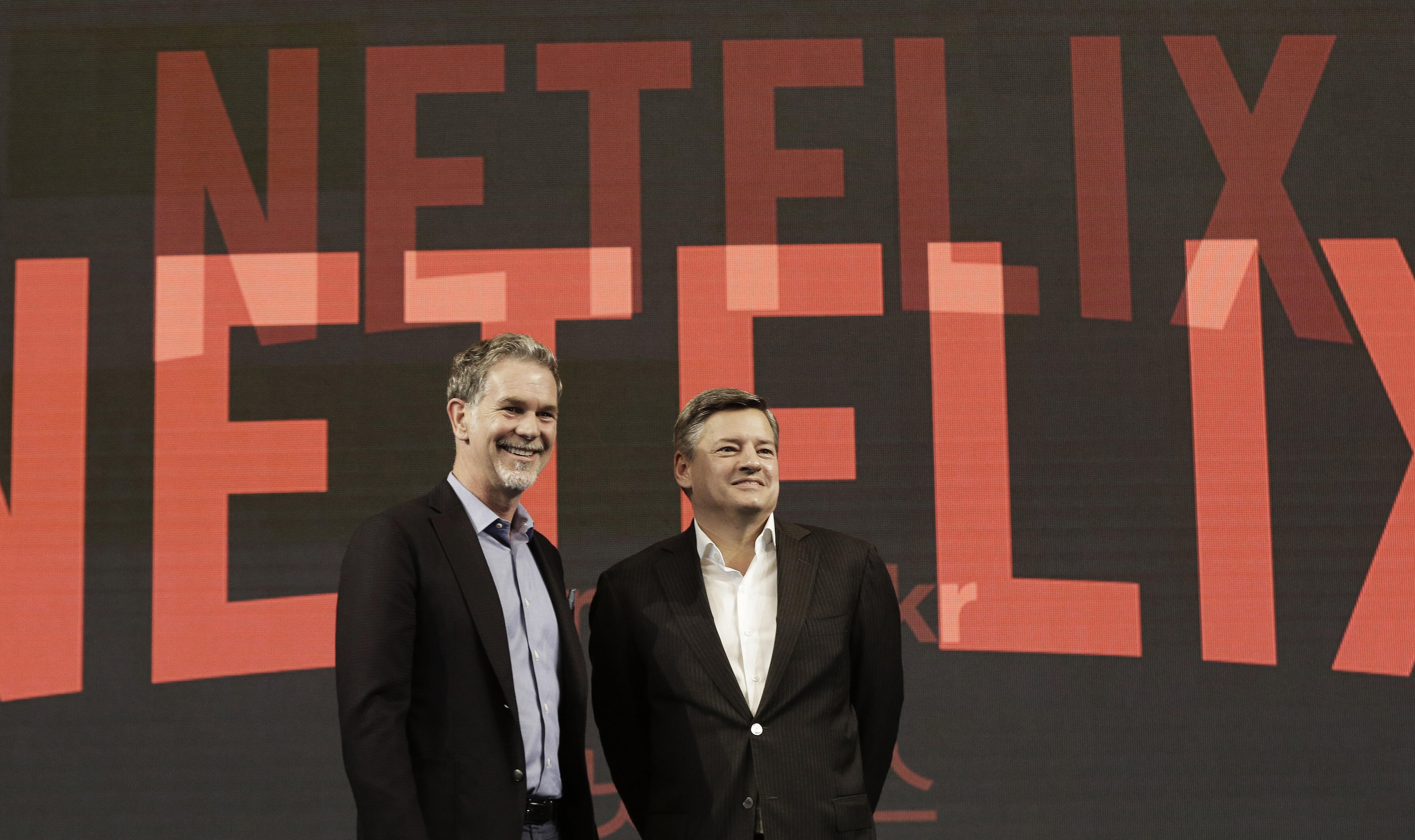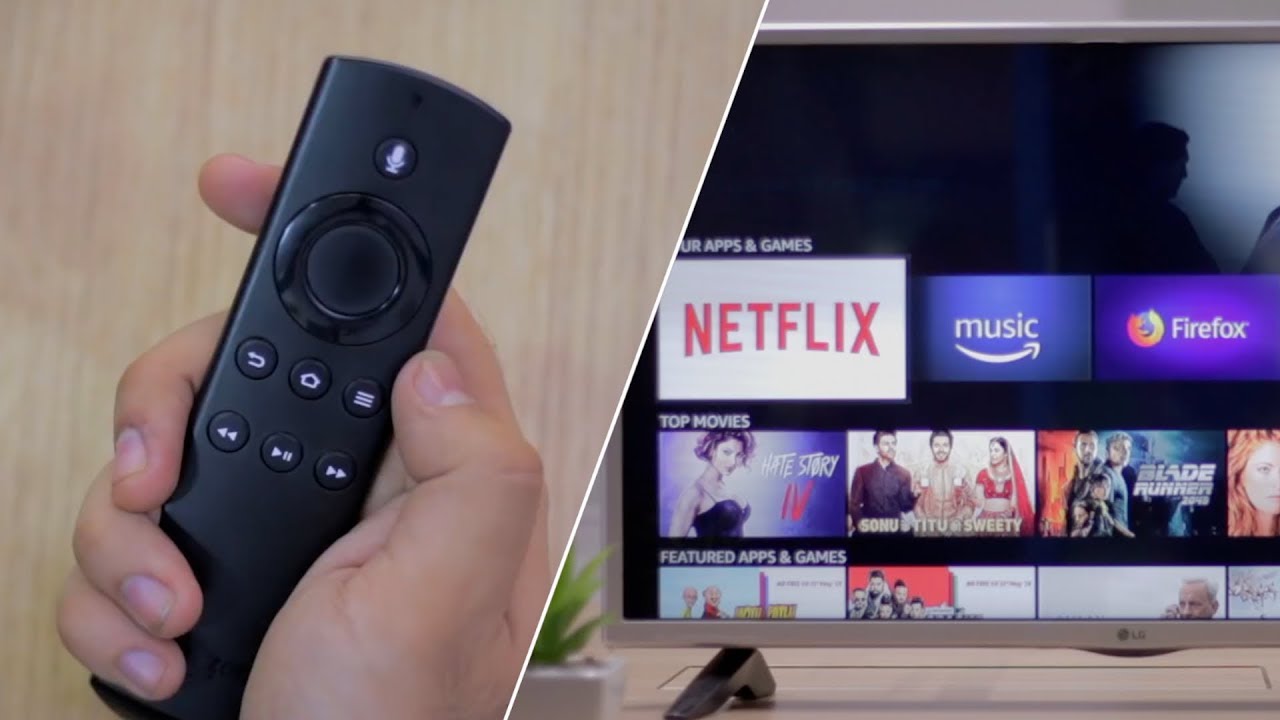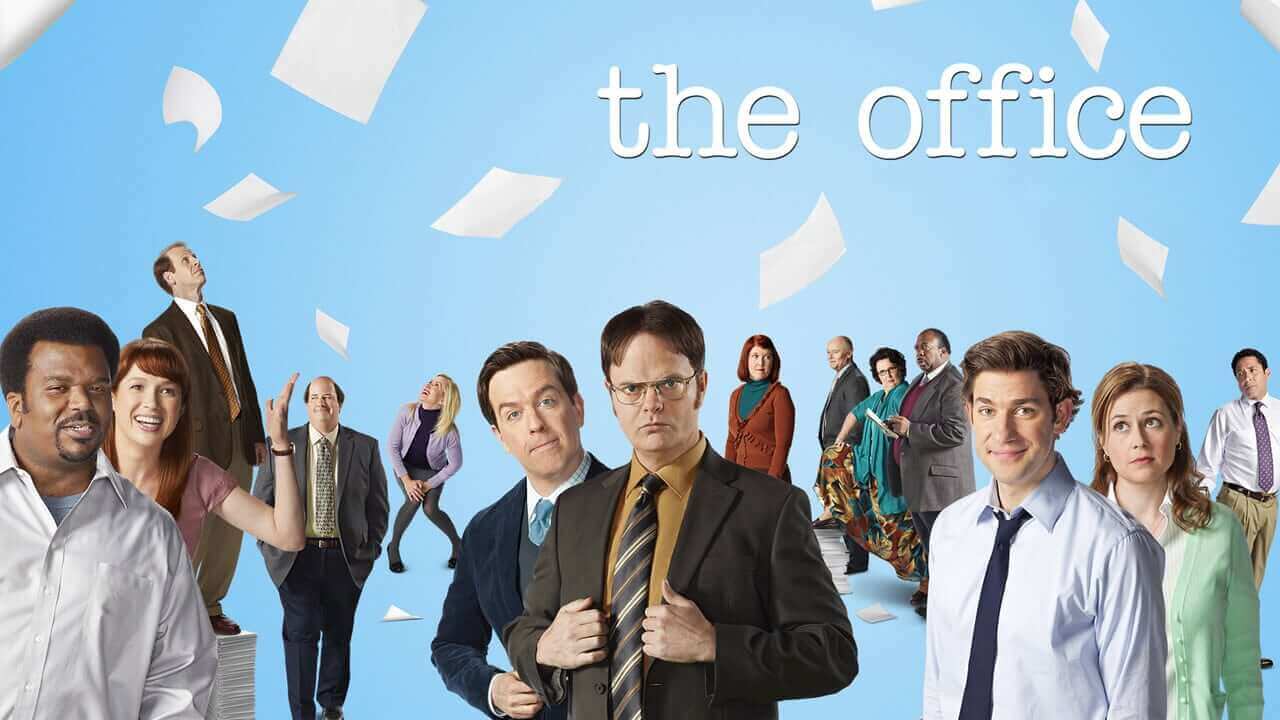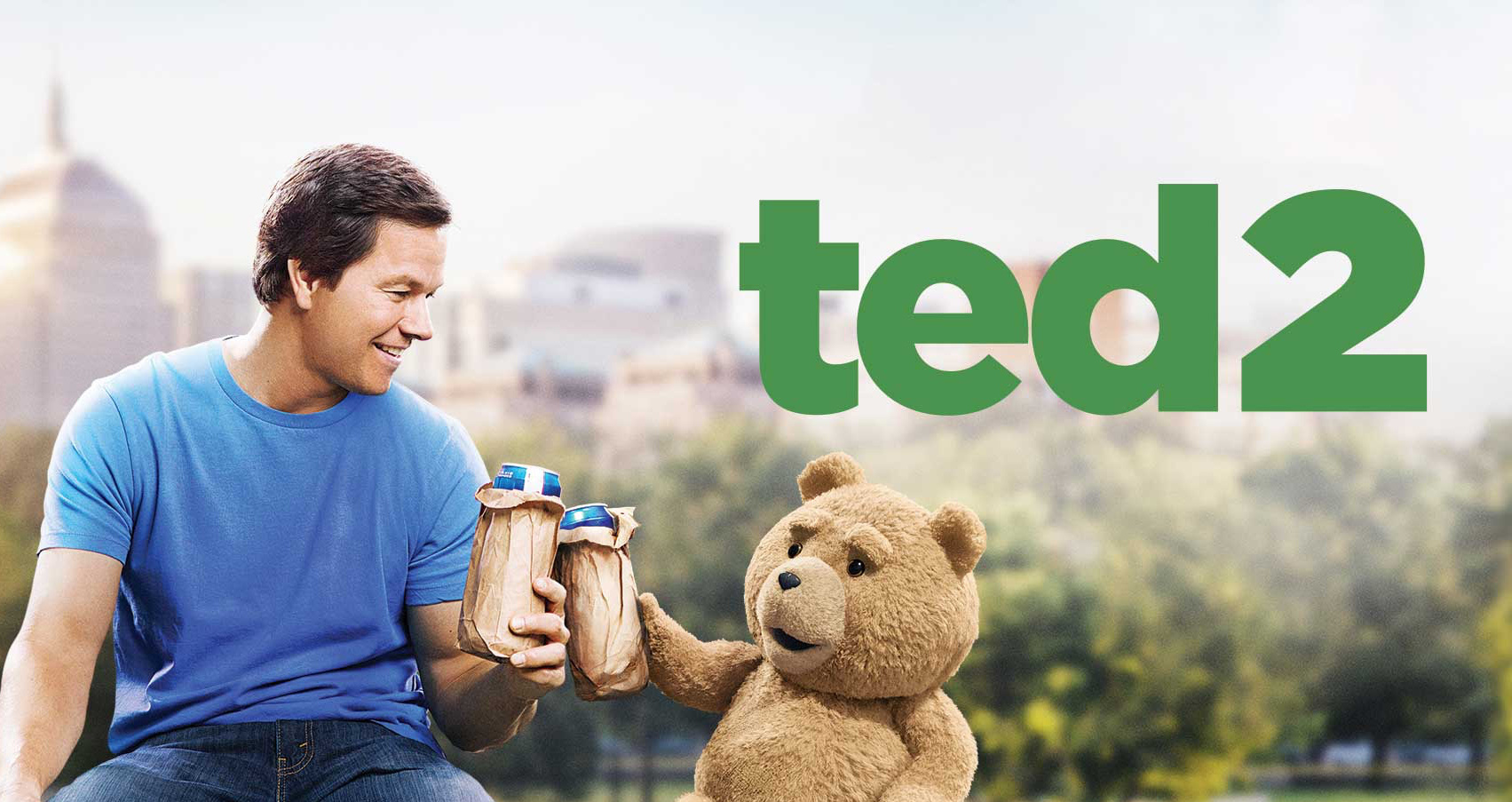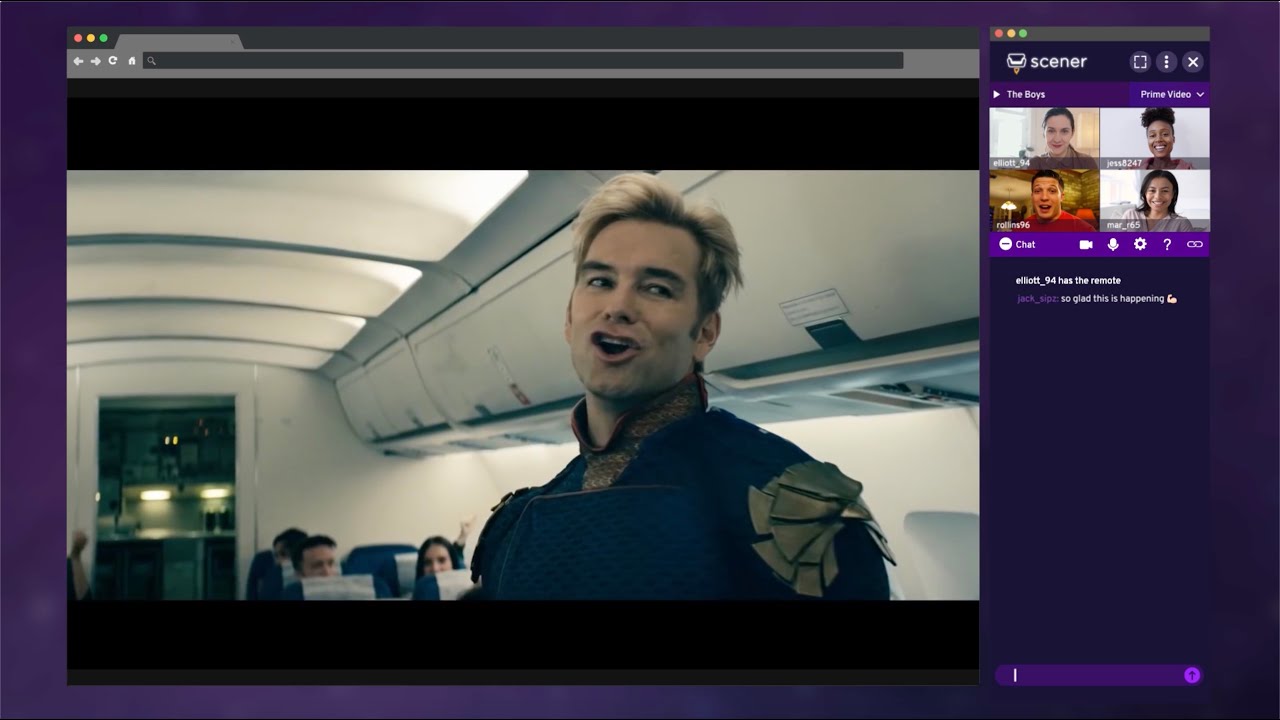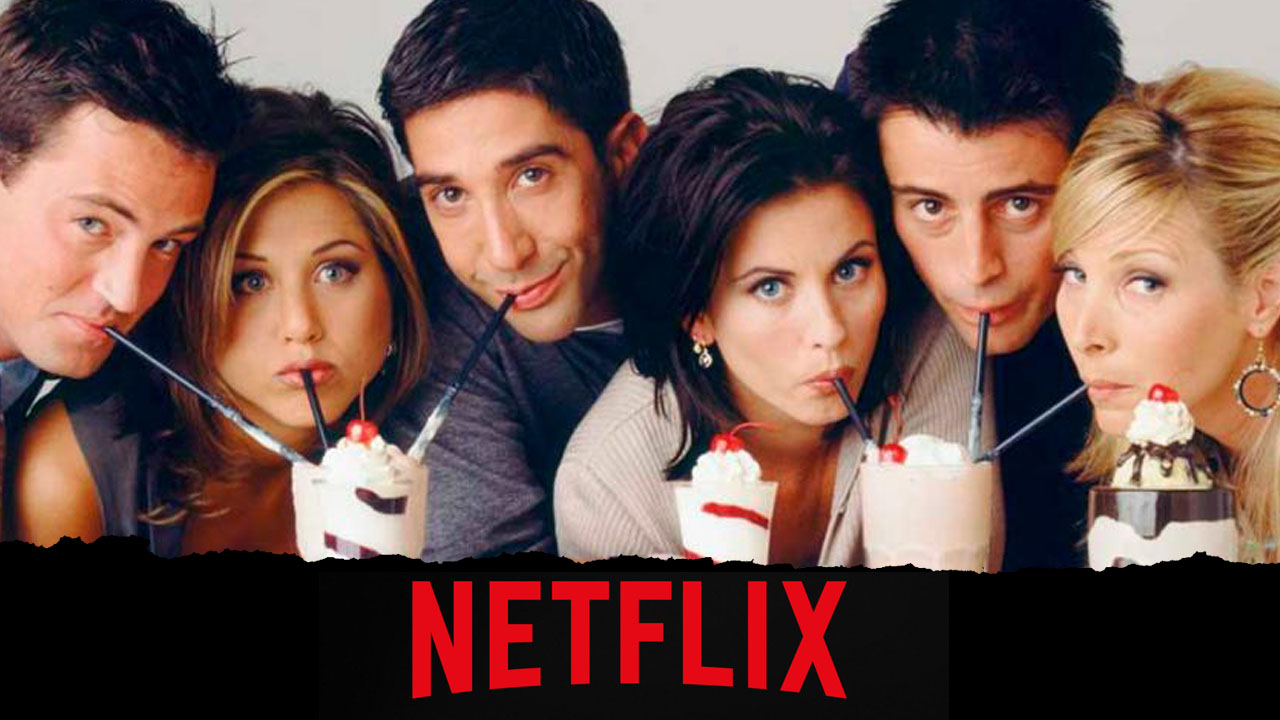Introduction
Netflix, the global streaming giant that has revolutionized the way we consume entertainment, has become a household name in the world of online video streaming. With millions of subscribers worldwide, Netflix offers a vast library of movies, TV shows, documentaries, and original content that can be accessed anytime, anywhere.
But have you ever wondered who started this remarkable company? Who had the vision and determination to challenge the traditional model of movie rentals and transform it into a behemoth of the streaming industry? In this article, we will delve into the origins of Netflix and explore the individuals behind its success.
Reed Hastings and Marc Randolph are the two visionaries who co-founded Netflix. Their entrepreneurial spirit, innovative thinking, and dedication paved the way for the company’s unprecedented growth and dominance in the streaming market.
To truly comprehend the journey of Netflix, we must dive into the early years and witness its evolution from a humble DVD rental service to a global streaming platform. We will also examine the pivotal moments in Netflix’s history that shaped its path, such as the shift from physical media to digital streaming and the introduction of original content.
Furthermore, we will explore Netflix’s bold expansion into international markets, cementing its position as a truly global entertainment provider. From localizing content to adapting business strategies to suit various regions, Netflix’s international ventures have proven to be a game-changer.
Looking ahead, we will contemplate the future of Netflix, considering the fierce competition in the streaming industry and the evolving preferences of viewers. Will Netflix continue to innovate and dominate the market, or will new technologies and platforms disrupt its reign?
Ladies and gentlemen, prepare to embark on a journey through the riveting history of Netflix, from its humble beginnings to its current status as an entertainment powerhouse. Let us uncover the remarkable story of Reed Hastings, Marc Randolph, and the company they founded.
Reed Hastings and Marc Randolph: The Founders of Netflix
The story of Netflix begins with Reed Hastings and Marc Randolph, two entrepreneurs who had a vision to disrupt the traditional movie rental industry. It was their shared passion for technology and entertainment that led them to create an innovative company that would change the way we watch movies and TV shows.
Reed Hastings, born on October 8, 1960, in Boston, Massachusetts, had a background in technology and a deep interest in education. He attended Stanford University, where he earned a bachelor’s degree in mathematics. Hastings went on to complete his master’s degree in computer science from Stanford as well. His experience in the technology sector would prove valuable in the future development of Netflix.
Marc Randolph, born on April 29, 1958, in Chappaqua, New York, had a passion for entrepreneurship and a knack for identifying business opportunities. He also attended Hamilton College in New York and later co-founded a computer mail order company called MicroWarehouse. Randolph’s expertise in business and marketing would be instrumental in shaping the early stages of Netflix.
The idea for Netflix was born during a long car ride that Hastings and Randolph took together in 1997. Frustrated with the late fees imposed by traditional video rental stores, they brainstormed a new business model that would offer a convenient and hassle-free movie rental experience. This led to the concept of a DVD rental-by-mail service.
In April 1998, Hastings and Randolph founded Netflix, with Hastings serving as the CEO and Randolph as the company’s first CEO. They believed that by offering a large selection of DVDs delivered directly to customers’ doors without any late fees, they could disrupt the dominance of video rental giants like Blockbuster.
The early days of Netflix were challenging, with the founders facing skepticism and financial constraints. However, they persevered, raising funds and continuously refining their business model. They also understood the potential of the internet and the importance of data-driven decisions. This led to the development of a sophisticated recommendation algorithm, which later became one of the key features that set Netflix apart from its competitors.
With their unwavering determination, Hastings and Randolph slowly but steadily built a customer base and gained traction in the market. However, one thing became clear – the future of movie consumption was shifting towards digital streaming. Recognizing this trend, Hastings and Randolph made a pivotal decision that would shape the course of Netflix’s success – they decided to shift their focus from DVD rentals to online streaming.
Thus began a new chapter in the history of Netflix, where the company embraced the era of streaming and became a household name. Reed Hastings and Marc Randolph’s entrepreneurial spirit, bold decisions, and their passion for delivering quality entertainment paved the way for Netflix’s continued growth and innovation.
Early Years and the Evolution of Netflix
In its early years, Netflix primarily operated as a DVD rental-by-mail service, offering a vast selection of movies and TV shows for customers to choose from. The concept was simple yet revolutionary – subscribers could create a list of movies they wanted to watch, and Netflix would mail them DVDs directly to their homes.
This business model was a game-changer, eliminating the need for customers to visit brick-and-mortar rental stores and deal with late fees. The convenience and flexibility offered by Netflix quickly gained popularity among movie enthusiasts, propelling the company’s rapid growth.
As the DVD rental service gained traction, Netflix focused on improving its customer experience. They introduced a personalized recommendation system based on users’ viewing history and ratings, which helped users discover new movies and TV shows that aligned with their preferences.
However, it soon became evident that the future of movie consumption would transcend physical media. The rise of digital technology and the widespread availability of high-speed internet paved the way for a new era – online streaming.
Recognizing the shifting landscape, Reed Hastings and his team at Netflix made a daring move to embrace streaming. In 2007, the company introduced “Watch Instantly,” a streaming service that allowed subscribers to stream movies and TV shows directly on their computers.
This shift into streaming marked a significant turning point for Netflix. The company invested in building a robust streaming infrastructure and struck partnerships with content providers to license popular movies and TV shows for their growing streaming library.
Over time, the streaming service gained traction, and Netflix expanded its compatibility to various devices, including gaming consoles, smartphones, and smart TVs. This allowed subscribers to enjoy their favorite movies and shows on a more convenient and accessible platform.
Netflix continued to innovate and improve its streaming experience. They introduced features such as offline downloads, enabling users to watch content offline without an internet connection, enhancing the convenience factor for on-the-go viewing.
Additionally, in order to stand out from competitors and attract more subscribers, Netflix began producing its own original content. The company ventured into the world of television series with shows like “House of Cards” and “Orange is the New Black,” which garnered critical acclaim and drew in a whole new audience.
With each passing year, Netflix expanded its original content offerings, producing award-winning shows, documentaries, and films. This not only solidified its position as a leading streaming platform but also demonstrated its commitment to fostering creativity and storytelling.
Today, Netflix has evolved into a global entertainment powerhouse, providing a vast selection of movies, TV shows, and original content to millions of subscribers around the world. Its far-reaching impact on the industry and the way we consume media is a testament to the early vision and the continuous evolution of this remarkable company.
The DVD Rental Service
One of the key milestones in the evolution of Netflix was its DVD rental service. In the early days of the company, Netflix operated on a subscription-based model that allowed customers to rent DVDs through the mail without any late fees or due dates.
The concept of this DVD rental-by-mail service was a breath of fresh air for movie enthusiasts. Instead of having to visit physical rental stores and deal with the inconvenience of returning DVDs within a specified timeframe, Netflix offered a convenient alternative.
Subscribers could create a personalized movie queue on the Netflix website, selecting the DVDs they wanted to watch. Netflix would then mail these DVDs directly to their homes, along with prepaid return envelopes.
The DVD rental service gained popularity rapidly, thanks to its user-friendly interface, vast selection of titles, and the elimination of late fees. Customers could keep the DVDs as long as they wanted, returning them whenever they were ready for the next ones in their queue.
To further enhance the customer experience, Netflix implemented a recommendation algorithm that analyzed users’ viewing patterns and ratings. This algorithm would suggest movies and TV shows that aligned with users’ preferences, ensuring they discovered new content that appealed to their interests.
The success of Netflix’s DVD rental service relied heavily on the efficient and timely delivery of DVDs to subscribers. The company invested in building a robust distribution network, strategically placing shipping centers across the country. This minimized delivery times and ensured that customers received their DVDs as quickly as possible.
In addition to the convenience and flexibility offered by the DVD rental service, Netflix also prioritized excellent customer service. The company provided prompt support for any issues or concerns that subscribers encountered, ensuring that their movie rental experience was smooth and hassle-free.
As the DVD rental service gained momentum, Netflix faced stiff competition from traditional video rental stores. Industry giants like Blockbuster enjoyed a dominant position in the market, with their vast network of physical stores and well-established rental systems.
However, Netflix’s innovative business model and commitment to customer satisfaction set it apart from the competition. The company’s user-centric approach and its focus on eliminating pain points such as late fees resonated with consumers, leading to a steady increase in subscribers.
The DVD rental service provided the foundation upon which Netflix would build its success. It allowed the company to establish a loyal customer base and generate revenue, which would later fuel its expansion into the world of online streaming. As technology advanced and consumer preferences shifted, Netflix would adapt and evolve, ultimately becoming the streaming giant we know today.
The Shift to Streaming
One of the defining moments in Netflix’s history was its decision to shift from a DVD rental service to an online streaming platform. This move marked a significant turning point for the company and revolutionized the way we consume entertainment.
As technology advanced and high-speed internet became more accessible, the demand for digital streaming of movies and TV shows grew exponentially. Reed Hastings and his team at Netflix recognized this shifting landscape and made a bold move to embrace streaming as the future of media consumption.
In 2007, Netflix introduced “Watch Instantly,” a streaming service that allowed subscribers to stream a select catalog of movies and TV shows directly on their computers. This was a game-changer, as it eliminated the need for physical DVDs and allowed users to instantly access content with just a few clicks.
The shift to streaming presented several advantages for both Netflix and its subscribers. For Netflix, it meant a reduction in operational costs associated with shipping DVDs and managing physical inventory. It also opened up opportunities for global expansion, as streaming allowed access to a wider audience without the need for physical distribution.
For subscribers, streaming offered unprecedented convenience and flexibility. They could now enjoy their favorite movies and TV shows instantly, without the hassle of waiting for DVDs to arrive in the mail. With a stable internet connection, users could access their Netflix account on various devices, such as smart TVs, laptops, tablets, and smartphones, enabling them to stream content anytime and anywhere.
Recognizing the potential of streaming, Netflix invested in building a robust streaming infrastructure. They developed proprietary encoding technology to deliver high-quality video content while minimizing bandwidth usage. This ensured a seamless streaming experience for users, even on slower internet connections.
As the popularity of streaming grew, Netflix expanded its streaming library by striking partnerships with major movie studios and TV networks. This allowed them to license a vast array of popular content, making their platform a go-to destination for viewers seeking a diverse range of entertainment options.
While the transition to streaming was met with some skepticism initially, Netflix’s focus on user experience and commitment to innovation propelled their streaming service to new heights. With continuous development and improvement, they refined the streaming experience by introducing features like personalized recommendations, multiple user profiles, and the ability to pause and resume across devices.
With its shift to streaming, Netflix not only survived the changing landscape of media consumption but also became a trailblazer in the industry. The company’s commitment to adapting and embracing new technologies has cemented its position as a global leader in online streaming, with millions of subscribers worldwide.
The shift to streaming not only transformed Netflix but also influenced the entire entertainment industry. It prompted traditional media companies to reassess their business models and adapt to the digital age by launching their own streaming platforms.
Today, streaming has become the dominant form of media consumption, and Netflix continues to be at the forefront of this revolution. The company’s commitment to delivering high-quality content and an exceptional user experience has made it a household name, captivating audiences around the world and shaping the future of entertainment.
Original Content and International Expansion
As Netflix solidified its position as a leading streaming platform, it recognized the need to differentiate itself from competitors and offer unique content that would attract and retain subscribers. This led to the expansion of their original content production, a strategic move that would revolutionize the way television shows and movies are created and consumed.
By producing original content, Netflix gained creative control over the shows and movies it offered, allowing for innovative storytelling and the exploration of diverse themes. They started by collaborating with acclaimed directors, producers, and actors, taking risks on unconventional projects that traditional studios might have overlooked.
With the release of shows like “House of Cards” and “Orange is the New Black,” Netflix made a significant impact in the industry. These original series garnered critical acclaim and attracted a dedicated following, solidifying Netflix’s reputation for producing high-quality content.
Netflix’s commitment to original content continued to grow, resulting in a diverse range of shows and movies across various genres. From gripping dramas and captivating documentaries to lighthearted comedies and thought-provoking animations, Netflix’s original programming appealed to a wide range of audiences.
One of the key advantages of producing original content was the ability to leverage data-driven insights to create content tailored to viewers’ preferences. By analyzing viewers’ viewing habits, ratings, and feedback, Netflix gained a deep understanding of audience preferences and used this information to develop shows and movies that resonated with their subscribers.
As Netflix’s popularity soared, the company looked beyond its domestic market and embarked on an ambitious international expansion. Understanding the diverse tastes and cultural nuances of different regions, Netflix sought to provide localized content and cater to the entertainment needs of audiences worldwide.
Netflix began its international expansion in 2010 by launching its streaming service in Canada, followed by expansions into Latin America, Europe, and Asia. To gain a foothold in these markets, the company not only localized its content but also collaborated with local creators and invested in producing original shows and movies in each region.
By creating global content that resonated with local audiences, Netflix successfully gained traction in international markets. Its commitment to providing high-quality entertainment in multiple languages allowed the company to draw in subscribers from around the world and compete with local streaming platforms.
International expansion also presented challenges, such as navigating different regulatory frameworks and dealing with competition from established regional players. However, Netflix’s willingness to adapt and localize its offerings, along with its focus on providing a seamless user experience, allowed it to penetrate new markets and build a strong global presence.
Today, Netflix is available in over 190 countries, catering to diverse audiences with a wide range of content options. The company continues to invest in original content production on a global scale, partnering with talent from around the world to tell captivating stories and bring unique perspectives to screens worldwide.
With each new original series or film, Netflix pushes boundaries, embraces innovation, and challenges the traditional norms of the entertainment industry. Its commitment to original content and international expansion has cemented its position as a global powerhouse, forever changing the way we consume and enjoy movies and TV shows.
The Future of Netflix
The future of Netflix is filled with both excitement and challenges as it strives to stay ahead in the rapidly evolving landscape of streaming entertainment. With new competitors entering the market and changing consumer preferences, Netflix continues to innovate and adapt to ensure its continued success.
One of the key areas of focus for Netflix is original content production. The company plans to increase its investment in creating unique and compelling shows and movies, catering to a diverse range of audience interests. By continuing to collaborate with talented creators and leveraging data-driven insights, Netflix aims to deliver content that not only entertains but also resonates with viewers on a deeper level.
As the streaming industry becomes more crowded, Netflix faces competition from both established media companies and new players. To stay ahead, Netflix is focused on maintaining its technological edge. From improving streaming quality to enhancing the user interface, Netflix constantly aims to provide a seamless and engaging experience for its subscribers.
Moreover, Netflix is investing heavily in technology and data analytics to personalize content recommendations further. By leveraging advanced algorithms and machine learning, the platform seeks to curate content suggestions that align with individual preferences, keeping viewers engaged and satisfied with their streaming experience.
The global marketplace presents numerous opportunities for Netflix’s expansion. As foreign markets continue to embrace streaming, Netflix plans to further strengthen its international presence. By localizing content and tailoring offerings to specific regions, the company aims to tap into new audiences and solidify its position as a global entertainment leader.
In addition to expansion efforts, Netflix is exploring partnerships and collaborations with local production studios and content creators worldwide. By fostering relationships with talent from different countries, Netflix can produce more diverse and culturally relevant content, catering to the increasing demand for authentic storytelling.
The rise of technology, such as augmented reality and virtual reality, also presents potential avenues for Netflix to explore. As these technologies continue to evolve, Netflix may leverage them to enhance the viewing experience and provide immersive storytelling experiences for its subscribers.
However, Netflix also faces challenges on its path to the future. The licensing of third-party content remains a crucial aspect, as the streaming rights for popular titles are often highly competitive and come at a significant cost. Balancing the need for licensed content while investing in original productions will be a delicate task for Netflix.
Additionally, as the industry becomes more fragmented with the emergence of various streaming services, maintaining subscriber loyalty becomes increasingly important. Netflix must strive to continuously deliver value to its subscribers by offering a diverse library of content that appeals to different demographics and interests.
While the future may bring both opportunities and challenges, one thing is certain – Netflix will remain at the forefront of the streaming revolution. By staying focused on innovation, investing in original content, expanding its international presence, and prioritizing user experience, Netflix is well-positioned to navigate the ever-changing landscape of entertainment and shape the future of streaming.
Conclusion
The journey of Netflix, from its humble beginnings as a DVD rental-by-mail service to becoming a global streaming powerhouse, is nothing short of remarkable. The vision and determination of its co-founders, Reed Hastings and Marc Randolph, paved the way for disruptive innovation in the entertainment industry.
Through their strategic decisions and adaptation to emerging technologies, Netflix transformed the way we consume movies and TV shows. The evolution from physical DVDs to online streaming marked a turning point, allowing viewers to access their favorite content whenever and wherever they desired.
Netflix’s commitment to original content production further solidified its position as a leader in the industry. By creating captivating and diverse shows and movies, the company not only entertained but also pushed boundaries and challenged traditional norms.
The company’s international expansion showcased its ability to thrive in different markets and cater to diverse audiences worldwide. Through localization efforts and partnerships with local creators, Netflix was able to establish a global footprint and provide relevant and culturally resonant content.
Looking to the future, Netflix faces both opportunities and challenges. With its focus on original content, technological innovation, personalization, and global expansion, Netflix aims to remain at the forefront of the streaming revolution.
Competition within the streaming landscape continues to grow, and Netflix must navigate the complexities of licensing and subscriber loyalty. However, the company’s commitment to delivering a seamless user experience and a vast library of engaging content positions it well for future success.
As technology continues to advance and viewing preferences evolve, Netflix will undoubtedly adapt and innovate to meet the changing demands of its subscribers. The future holds immense potential for Netflix to continue revolutionizing the way we consume entertainment and shape the industry for years to come.
In conclusion, the visionary leadership of Reed Hastings and Marc Randolph, coupled with Netflix’s relentless pursuit of innovation and its dedication to delivering quality content, have transformed the entertainment landscape. With its global reach and commitment to pushing boundaries, Netflix is poised to shape the future of streaming and redefine the way we experience entertainment.







